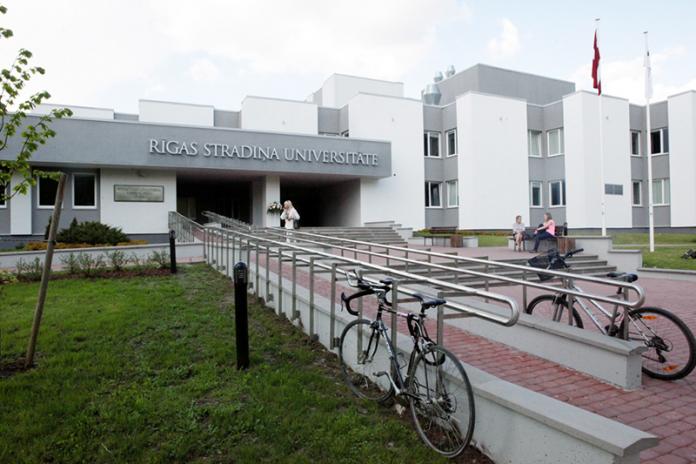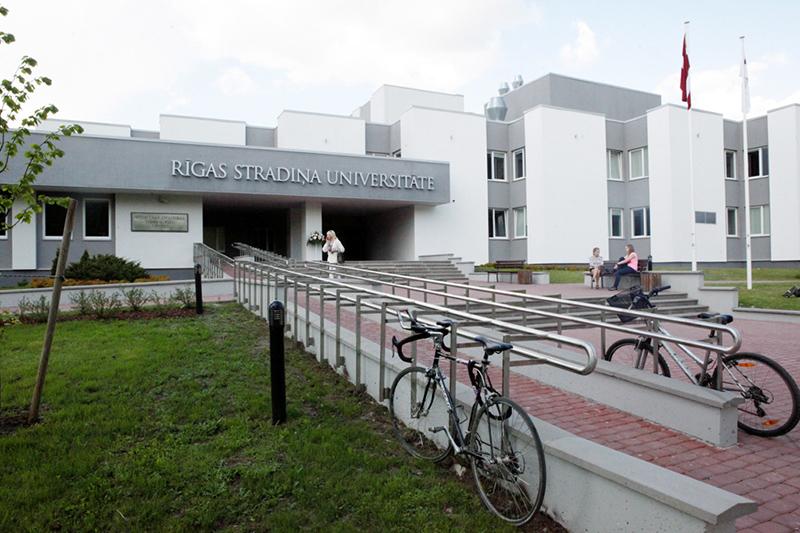RSU Ensures Accessibility for People with Special Needs
On 19 September, the Ministry of Welfare awarded Rīga Stradiņš University (RSU) for its contribution to promoting equal opportunities by implementing the European Regional Development Fund (ERDF) project “Modernisation of Infrastructure at Rīga Stradiņš University to Improve the Quality of the Implementation of Health Care and Natural Sciences Study Programmes”.
The renovation of the RSU Medical Education Technology Centre (METC) was recognised as a good example of the Equal Opportunities horizontal priority.
The award ceremony took place during the final conference of the European Union Structural Fund 2007-2013 planning period.
The Latvian building code currently prescribes minimum requirements for equal opportunities, therefore all buildings undergoing reconstruction must meet these requirements.
‘To meet the current requirements, the technical design of the METC reconstruction was created in accordance with the three principal EU directions — equal opportunities to receive services, goods, assistance and information, and to be able to take an active part in society, obtain education and integrate into the labour market,’ says Asja Lunga, Project Manager at the RSU Development and Project Department.
By carrying out the reconstruction, we had to ensure that the METC building at 26a Anniņmuižas Bulvāris was suitable for persons with movement, vision, hearing or mental impairments. The projects envisioned within the project were also assessed from the point of view of gender equality and ageing.
Lunga points out that the technical design of the building's reconstruction also took into account the principles of universal design, which provide accessibility to everyone. Specialists from the RSU Faculty of Rehabilitation with experience in universal design from international projects were invited to consult. The design of the building also took into account recommendations and guidelines from the Latvian Society of the Blind, with examples of good practice on accessibility for people with disabilities.
After reconstruction, the following improvements were introduced into the building’s design:
- a ramp was constructed at the building’s main entrance;
- four out of 62 parking places are reserved for people with disabilities;
- the building’s doors were changed so the width of the door frames measure 1m;
- a wheelchair ramp was built in the entrance-hall;
- a lift with the necessary dimensions and equipment (larger buttons with labels in Braille) was built;
- all the storeys now have level floors, which is vital to people with disabilities;
- toilets and showers with special equipment for people with disabilities have been built;
- the floors are made from non-slip linoleum, non-slip stone tiles, or parquet;
- the front rows in the conference halls were moved back, so that people can enter the room comfortably in wheelchairs.
‘Compared to other facilities that were put forward as good examples of ensuring equal opportunities, the METC building’s advantage was how it has been adapted to the needs of people with different functional disabilities. The improvements made the building accessible not only to people in wheelchairs, but also to people with visual and hearing impairments. Special attention was paid to providing information – information boards, direction signs, sound signals and warning signs. Not enough attention had been paid to this in several of the other projects,’ says certified occupational therapist Liene Saukuma who is a representative of the assessment commission and an Assistant Lecturer of the RSU Department of Rehabilitation. ‘After recommendations by occupational therapists the project developers continued their consultations with experts on the most suitable solutions (for instance, about manufacturing informational boards and direction signs) to improve the building’s accessibility. Almost all of these solutions have now been implemented.’
By assessing the accessibility of RSU premises, Lunga says that the situation has vastly improved in recent years, however, some university buildings still need significant investment and special solutions to ensure accessibility. Some of these include the RSU Institute of Anatomy and Anthropology, and the Anatomical Theatre at 9 Kronvalda Bulvāris, which is a state-protected cultural monument. Ensuring accessibility to this building must take place in accordance with the relevant regulatory frameworks on the protection of cultural monuments.
Attracting people with disabilities to study at RSU depends on the principle of equal opportunities, therefore RSU will continue to work hard to provide an accessible study and work environment.
Related news
 RSU students win silver in European i-Days finals with idea for medical deviceFor Students, Innovation, Recognition, EIT Health
RSU students win silver in European i-Days finals with idea for medical deviceFor Students, Innovation, Recognition, EIT Health




